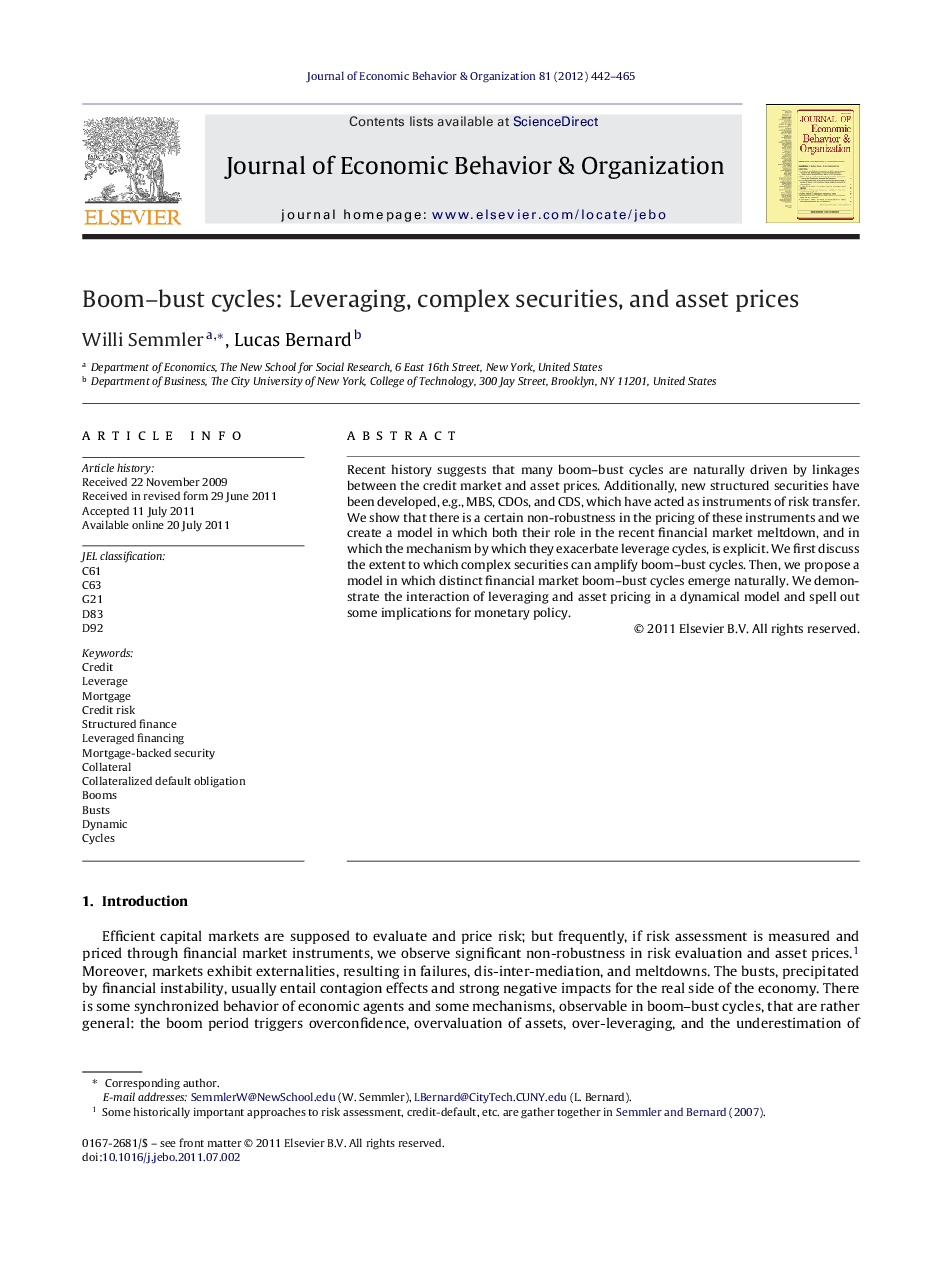| Article ID | Journal | Published Year | Pages | File Type |
|---|---|---|---|---|
| 883756 | Journal of Economic Behavior & Organization | 2012 | 24 Pages |
Recent history suggests that many boom–bust cycles are naturally driven by linkages between the credit market and asset prices. Additionally, new structured securities have been developed, e.g., MBS, CDOs, and CDS, which have acted as instruments of risk transfer. We show that there is a certain non-robustness in the pricing of these instruments and we create a model in which both their role in the recent financial market meltdown, and in which the mechanism by which they exacerbate leverage cycles, is explicit. We first discuss the extent to which complex securities can amplify boom–bust cycles. Then, we propose a model in which distinct financial market boom–bust cycles emerge naturally. We demonstrate the interaction of leveraging and asset pricing in a dynamical model and spell out some implications for monetary policy.
► We model leveraged financing wherein borrowing costs are endogenous. The asset–price interaction involves “flows.” ► We use one dynamic decision variable and two state equations. ► Borrowing and the evolution of debt drive asset prices which feed back into borrowing. ► We conclude that leverage cycles appear naturally and that complex securities have the potential to amplify boom–bust cycles.
